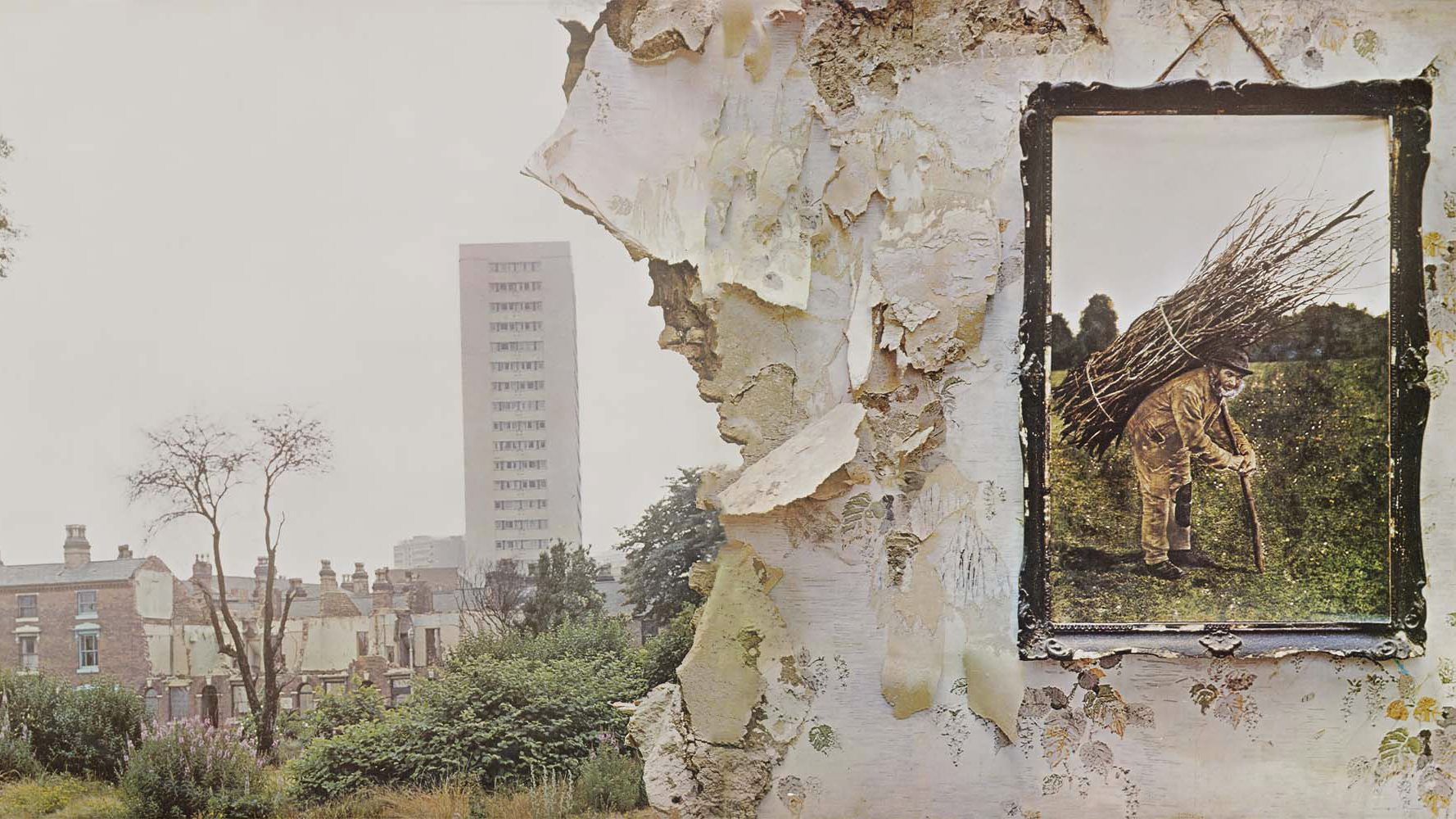
Led Zeppelin’s first two albums rocked, rolled and downright blues-boogied the band to the point of greatness, establishing them as the true kings of heavy. Then came 1970’s Led Zeppelin III, which raised more than a few eyebrows for its reliance on folk rock, mystical fantasy and acoustic balladry.
But when Zep’s fourth record hit the world’s turntables in November 1971, all was promptly forgiven. “I suppose there’d been a bit of a backlash about the Zep III album being more of an acoustic-type thing,” legendary engineer Andy Johns told Total Guitar magazine in 2011. “The album sold well, but there were some complaints about what had happened to Led Zeppelin... like ‘Where’s the meat?’ So I guess when we went back to do the fourth one, that must’ve been on Jimmy [Page]’s mind.”
If the monster-riffing of album opener Black Dog wasn’t enough to settle the heavier-than-thou stomachs of the Zep faithful, then Rock And Roll, IV’s second track, would blow any remaining worries out of the water. As soon as John Bonham’s cymbal-heavy opener hits the ears and Page’s axe rips into the beat like a speed-snorting Chuck Berry, you know you’re hearing a band at the height of their powers.
While many of the songs on Led Zeppelin IV had already been part-written by the time the band arrived at Headley Grange to record it in January 1971, the 12-bar battering of Rock And Roll serves as a living testament to the creative buzz that was enveloping Zep during those sessions.
The track stormed out of nowhere after a failed attempt to nail Four Sticks’ tricky time signature. “We were attempting Four Sticks and it wasn’t happening,” Jimmy Page later told the BBC. “And Bonzo started the drum intro to Keep A-Knockin’ [the 1957 Little Richard rock ’n’ roll smash] and I played the riff automatically. That was Rock And Roll and we got through the whole of the 12-bar bit. We said, ‘This is great, forget Four Sticks, let’s work on this’.”
He was a very quick writer, was old Robert
“I just remember them playing it and Pagey having that ‘dum-dum dum-dum, dum-dum, da-dum dum', recalled Johns. “It just sort of happened... they were very fast, they didn’t muck about. Like everything else, it was, ‘We’re gonna do this now!’ and kabam... two or three takes, done!”
“It sounded good and we went into the [Rolling Stones’ mobile recording] truck to hear it,” Page told Disc magazine at the time. “Within 15 minutes, the whole framework for the rest had been written and recorded. That’s quite raw and those sorts of things are happening all the time. Whenever we get together, we come up with something.”
As usual, Robert Plant took no time at all to sketch out a few lyrics, serving up a wistful tribute to love, youth and partying. “He was a very quick writer, was old Robert,” recalled Johns. “He was so fast... and he would always get his vocals in two or three takes every time.”
We said, ‘This is great, forget Four Sticks, let’s work on this’
The core rhythm track of Rock And Roll was recorded with all four guys and their gear in Headley Grange’s drawing room. Bonham’s drum setup caused headaches, as Johns explained: “John’s got his hi-hat nearly all the way open and that was bleeding all over the place. It was difficult to do, but it was the appropriate way to play the thing. It was just a bit tough, because the hat was leaking into bloody everything, especially the snare mic.”
On the guitar side, Jimmy Page crashed through the thundering main riff with his trademark '59 cherry sunburst Les Paul plugged into a Hiwatt Custom 100, which was pumped right up to the max. However, for the stabbing guitar overdubs, solo and outro section, he opened up on his ’59 ‘Dragon Tele’. Some of these additional layers were captured with a revolving Leslie speaker cabinet.
I think I must’ve redone it, and I won’t exaggerate, three or four times because of that Leslie effect.
“I know Pagey made me mix the outro section half a dozen times: ‘Not enough of me, dear boy! Not enough of me, make me louder!’” laughed Johns. “He kept showing up at the studio and I’d be in the middle of another gig... ‘Look, you’ve got to redo the outro section! ’
"I think I must’ve redone it, and I won’t exaggerate, three or four times because of that Leslie effect. There’s the solo section, a bit of counterpoint now and again, and then on the outro section he goes bananas, but you have to turn it up quite a bit to really hear what notes he’s doing.”
Credit also has to go to ex-Rolling Stone Ian ‘Stu’ Stewart, who contributed the maniacal honky-tonk piano on the track. Stu, a close mate of Page’s, was present at the Headley Grange sessions as the resident engineer responsible for the Stones’ mobile recording truck, which was parked at the front of the house. Andy Johns fondly remembers him “hunched over the piano, banging away and having a good old time”.
Johns, who was only 19 years old when he engineered Led Zeppelin IV, had been responsible for capturing some of the greatest guitar albums of the past four decades, including Exile On Main Street by the Rolling Stones, Highway by Free and Marquee Moon by Television, but he still sees Zeppelin’s fourth long player as a definite milestone.
“It was a hell of a record,” he told Total Guitar. “On the few occasions that I listen to it, I’m still very pleased with the results. It was a spectacular thing and I wouldn’t have missed it for the world!”







